Ready to make some homemade ricotta cheese? Wash your hands, roll up your sleeves, and get ready to make some delicious cheese with this home recipe.
Channel your inner Italiano and learn how to make creamy, delicious homemade ricotta cheese. This homemade cheese recipe will delight your tastebuds and save your wallet. This quick and easy cheese recipe is perfect for stuffing your own homemade pastas (recipe here) or, for a more decadent treat, make your own canoli's.
Homemade Ricotta Cheese Recipe
Get ready for some delicious, creamy homemade cheese magic here, folks!
Ingredients & Supplies
- 1 Gallon Milk (I cut the recipe in half here to use up this storebought half gallon of milk)
- 1 tsp. citric acid (you'll need more if using fresh farm milk)
- 1 tsp. sea salt (optional)
- Large Pot made with non-reactive materials (I prefer stainless steel)
- Cooking Thermometer
- Butter Muslin
Step 1
Pour the milk into a pot that is made of non-reactive materials (not aluminum or cast iron)
Step 2
Add citric acid and salt (if desired). Stir.
Step 3
Heat the milk to 195 degrees Fahrenheit, stirring often to avoid scorching the milk.
Step 4
When the curds and whey have separated, remove the pot from the burner and let set for 5 minutes.
Step 5
Line a colander with butter muslin and gently ladle the curds into the cloth.
Step 6
To drain the curds, tie the cloth into a hobo bag and hang over a bowl (and/or sink) to drain for 30 minutes or more depending on desired consistency.
Step 7
Enjoy!
Your homemade ricotta cheese will last up to 2 weeks in the fridge, or it may be frozen.
That’s all, fellow homesteaders! Did you enjoy our homemade ricotta cheese recipe? What's your favorite kind of cheese?
Sign up for our newsletter to receive more homesteading tips, tricks, and tidbits, including EXCLUSIVE DISCOUNTS to offers and promos. Click To Subscribe


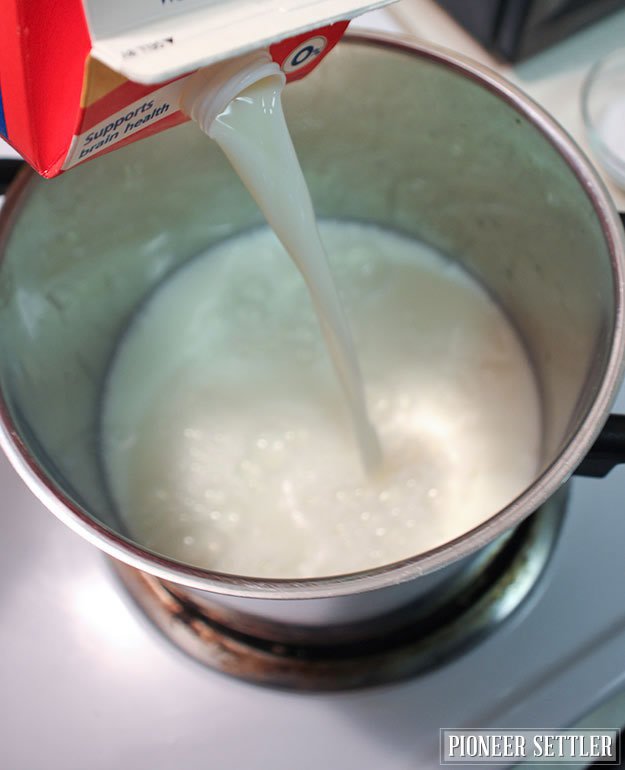
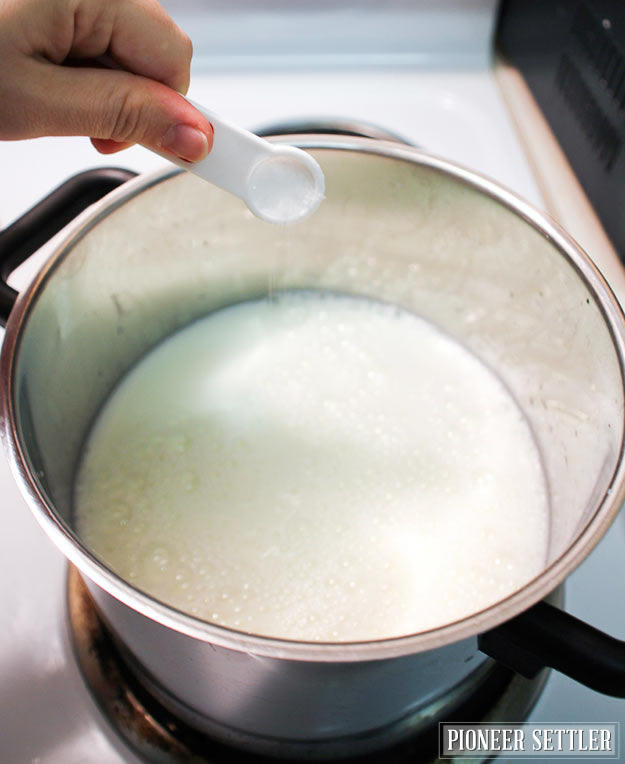

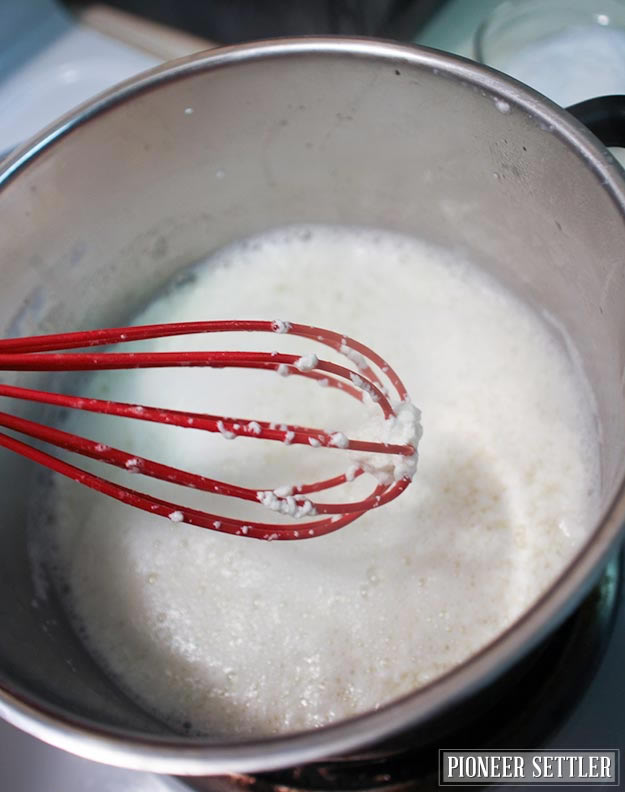
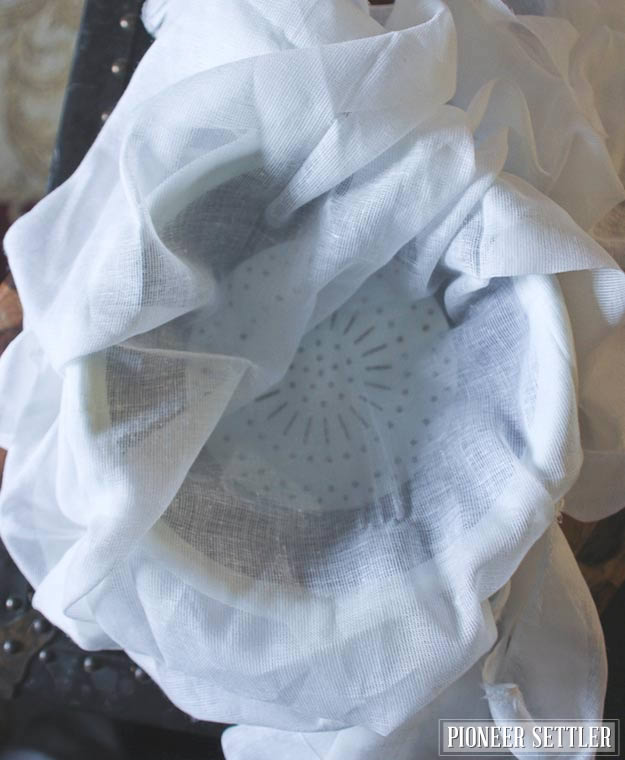
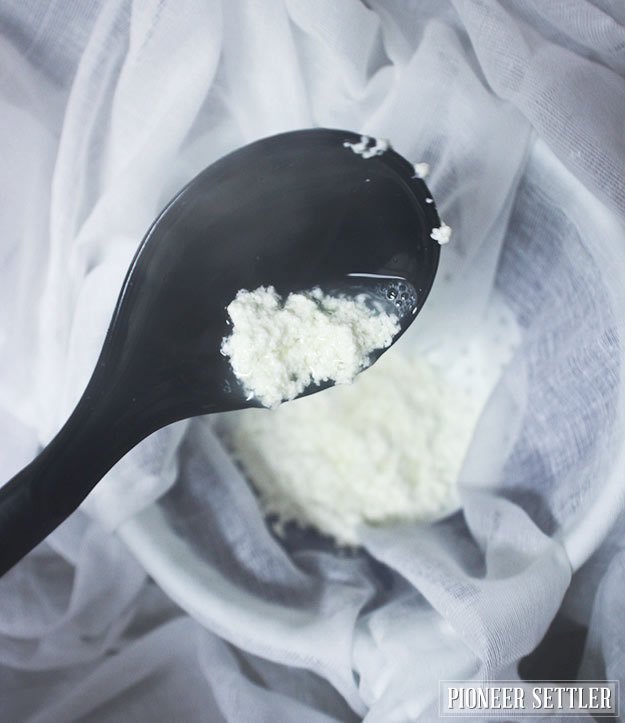



What do you use the whey for?
Whey has many uses, but I use it in place of water in a lot of baking recipes (it’s particularly great for homemade pizza crust and french bread). You can also use it as part of a lacto-fermenting process to pickle produce, you can feed it to your animals (dogs and pigs love it in particular) or you can use it in your garden as part of compost or just dilute the whey with lots of water and feed it to your plants!
I can attest to how good this is. I use vinegar to separate the curds and sometimes lemon to add some flavor in there. I also don’t call it ricotta, although I guess it is. I make it for paneer dishes, which just means I squeeze out a ton of liquid from the curds.
This sounds easy enough and I would like to give it a try but….what are citric acid and butter muslin and where would one find these things?
I now typically use the whey ONLY to make bread but I had so much I searched for other uses. This suburbanite only has a finicky cat so I couldn’t “feed the whey to the animals” but since I have 5 kids I tried to feed it to them. I searched the internet and found a recipe for “whey lemonade”.
IT WAS NOT WELL RECEIVED
Reactions varied, one son was ambivalent and he and his visiting friend thought it was a vitamin/sports drink. I probably could have fooled these two if I’d added some food coloring or put it into a sports bottle.
The other four kids writhed, wretched and still hold grudges against this poor mom who was just trying to be frugal. 3 years later they STILL shudder when the word “whey” comes up in conversation.
My advice, don’t scar the children, save some to bake great bread and then just pour the rest out!!
Darn it! I wish I could print this! I guess I will keep looking for another recipe, that I can print.